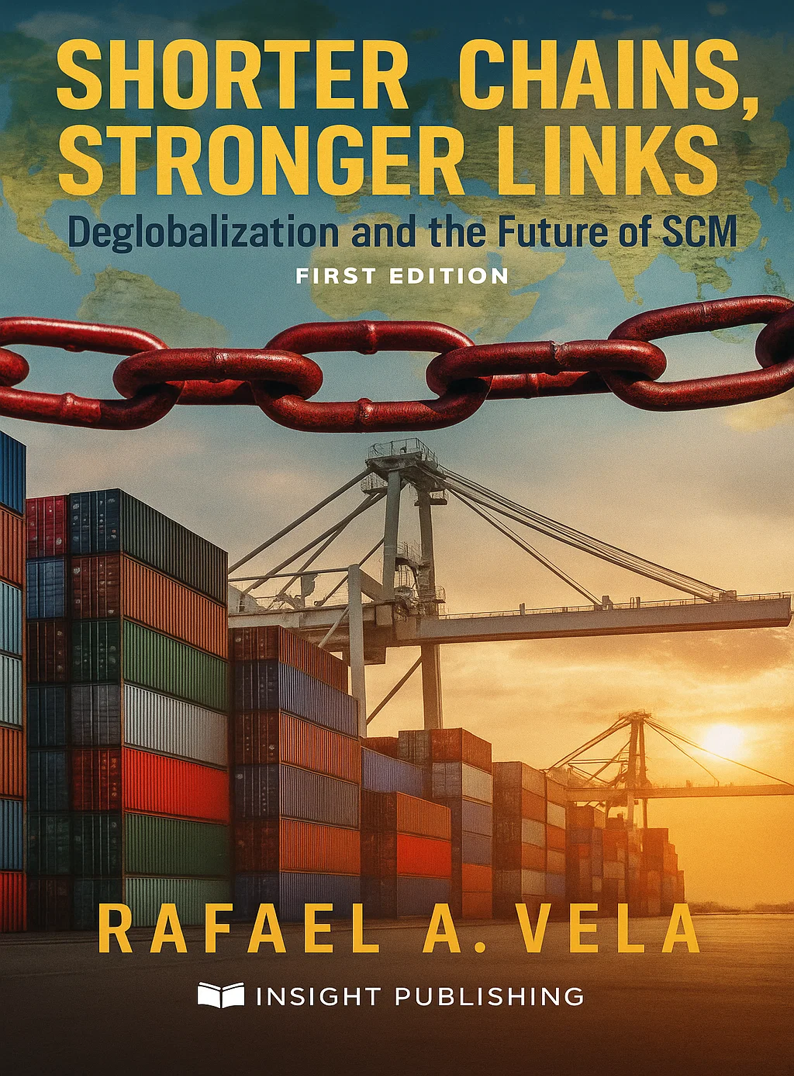
Shorter Chains, Stronger Links - Deglobalization and the Future of SCM
Tired of supply chain disruptions putting your business at risk?
The global landscape is changing, and the old "stretch-and-save" model is no longer working. Geopolitical tensions, trade wars, and unexpected crises are making fragile, distant supply chains a liability.
You need a new strategy.
"SHORTER CHAINS, STRONGER LINKS" is your practical playbook for building a resilient, profitable, and secure supply chain in an era of deglobalization.
In this essential guide, you will discover how to:
- Reduce risk by shifting from vulnerable global networks to robust, regionalized models.
- Enhance national security and create local economic stability with a powerful deglobalization framework.
- Future-proof your operations against geopolitical upheaval, pandemics, and other unforeseen disruptions.
This isn't just a book about understanding the future of SCM; it's a blueprint for shaping it. Written by a supply chain veteran with 40 years of experience, this guide is for business leaders, strategists, and professionals who refuse to leave their success to chance.
Stop reacting to global chaos. Start building your advantage.
Get your copy of "SHORTER CHAINS, STRONGER LINKS" today and secure your business for the years ahead.
Table of Contents
Chapter 1: The End of the Long Boom? Understanding Deglobalization in SCM
o Defining globalization and its peak in supply chain management
o Introducing the concept of deglobalization and its various dimensions
o Distinguishing deglobalization from related trends (reshoring, nearshoring, regionalization)
o Setting the stage: The vulnerabilities exposed in hyper-globalized systems
Chapter 2: The Cracks Appear: Drivers of Deglobalization
o Geopolitical tensions and the rise of economic nationalism
o Trade wars, tariffs, and the fracturing of international trade agreements
o The impact of global disruptions: Pandemics, natural disasters, and geopolitical instability
o Rising concerns about resilience, security, and national interests
Chapter 3: Technological Catalysts for Regionalization
o The role of automation and robotics in enabling localized production
o Additive manufacturing (3D printing) and distributed manufacturing models
o Digital platforms and the rise of regional supply chain ecosystems
o The interplay between technological advancements and deglobalization trends
Chapter 4: Bringing Production Closer: Reshoring and Nearshoring in Practice
o Analyzing the motivations, benefits, and challenges of reshoring
o Exploring the dynamics and advantages of nearshoring strategies
o Case studies of companies implementing reshoring and nearshoring initiatives
o Evaluating the economic and operational impacts on different industries
Chapter 5: Building Regional Resilience: Designing Localized Supply Networks
o Strategies for identifying and developing regional suppliers
o The importance of supplier diversification within regional ecosystems
o Developing robust regional logistics and transportation infrastructure
o Fostering collaboration and trust among regional supply chain partners
Chapter 6: The Evolution of Inventory and Risk Management
o Moving beyond lean principles: The need for strategic inventory buffers
o Leveraging predictive analytics for demand forecasting in volatile environments
o Developing comprehensive risk management strategies for regional supply chains
o The role of insurance and financial instruments in mitigating regional risks
Chapter 7: Rethinking Sourcing and Supplier Relationships in a Regional Context
o Prioritizing ethical, sustainable, and resilient regional sourcing practices
o Building long-term, collaborative relationships with local suppliers
o The role of supplier development programs in strengthening regional capabilities
o Navigating the complexities of regional regulations and compliance
Chapter 8: The Digital Backbone of Regional Supply Chains
o Implementing digital twins for enhanced visibility and simulation
o The role of blockchain technology in ensuring transparency and trust
o Leveraging IoT and sensor technologies for real-time monitoring and optimization
o The importance of data analytics and AI for decision-making in regional networks
Chapter 9: The Human Element: Skills and Talent in Regionalized Operations
o Developing local talent pools for manufacturing, logistics, and supply chain management
o The role of vocational training and educational institutions in supporting regional growth
o Fostering collaboration between industry and academia to address skill gaps
o The impact of regionalization on labor markets and employment
Chapter 10: Sustainability and the Localization Dividend
o The potential for shorter supply chains to reduce environmental impact
o Promoting circular economy principles within regional ecosystems
o Balancing economic competitiveness with environmental and social responsibility in localized models
o The role of government policies in supporting sustainable regional supply chains
Chapter 11: Strategic Adaptation: Thriving in a Deglobalizing Landscape
o Developing frameworks for assessing the risks and opportunities of deglobalization for individual businesses
o Strategies for adapting business models and supply chain configurations for regional focus
o The importance of agility, flexibility, and scenario planning in navigating uncertainty
o Building organizational capabilities for managing regionalized supply chains
Chapter 12: The Future of Global Trade and Regional Blocs
o Exploring potential future scenarios for global trade in a deglobalized world
o The rise of regional trade agreements and their impact on supply chains
o The ongoing tension between global efficiency and regional resilience
o Concluding thoughts: The enduring principles of supply chain management in a transformed global landscape
Conclusion: Forging Resilience in a New World Order
Appendix A: Navigating Regional Trade Blocs: A Quick Reference Guide
Appendix B: Ethical Sourcing & Labor Standards in Regional Contexts: A Practical Guide
Appendix C: Cybersecurity Best Practices for Regional Digital Supply Networks
Appendix D: Building a Business Case for Reshoring/Nearshoring: Key Financial & Strategic Considerations
